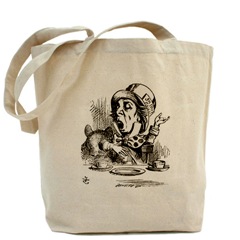
White buttons or agaricus bisporus is the most popular mushroom, it represent about 90 percent of mushrooms consumed in the United States.
Taste. They have a fairly mild taste and blend well with almost anything. Their flavor intensifies when cooked.
Preparation. They can be sautéed or cooked any way or enjoyed raw in salads.
Uses. Try them sliced and sautéed on pizza, in pasta, quesadillas or cheeseburgers.
Nutrition. A serving of 4-5 white mushrooms provides 18 calories, 0 grams of fat and 3 grams of carbohydrates, yet is a good source of the antioxidant selenium; B vitamins riboflavin, niacin and pantothenic acid; and copper. And, mushrooms have close to 300 mg of potassium per serving, an imprtant nutrient that many Americans do not get enough of. White buttons also contain 2.8 mg of the antioxidant ergothioneine and 15 IU of vitamin D.
CRIMINI MUSHROOM



Crimini is also known as baby 'bellas or browns. The Crimini variety is similar in appearance to the white mushroom and belongs to the same species (Agaricus Bisporus). It has a light-tan to rich-brown hat and a firmer texture.The Crimini mushroom is the Portobello mushroom at the initial growth stage.
Preparation. Sauté, broil, microwave or cook almost any way. The Crimini can substitute for or be combined with any recipe that calls for white mushrooms. Also it serves as a vegetarian entrée or as a side dish.
Uses. Their hearty, full-bodied taste makes them an excellent addition to beef, wild game and vegetable dishes.
Nutrition. A serving of 4-5 crimini mushrooms provides 23 calories, 0 grams of fat and 4 grams of carbohydrates, yet is an excellent source of the antioxidant selenium, the B vitamin riboflavin and copper; and a good source of potassium, phosphorus and B vitamins niacin and pantothenic acid. Criminis also contain 4.9 mg of the antioxidant ergothioneine.
PORTABELLA MUSHROOM


Portabella is a larger relative of criminis, Portabellas have tan or brown caps and measure up to 6 inches in diameter.
Flavor. They have a deep, meat-like texture and flavor.
Preparation. Portabellas can be grilled, broiled or roasted and served as appetizers, entrees or side dishes.
Preparation. Portabellas can be grilled, broiled or roasted and served as appetizers, entrees or side dishes.
Uses. Their hearty taste and texture makes them a flavorful vegetarian alternative - grill and serve them as "burgers" on toasted buns.
Nutrition. One medium Portabella cap provides 22 calories, 0 grams of fat and 4 grams of carbohydrates, yet it is an excellent source of the B vitamin riboflavin; and a good source of the antioxidant selenium, potassium, phosphorus, the B vitamins niacin and pantothenic acid and copper. Portabellas also contain 4.3 mg of the antioxidant ergothioneine.
OYSTER MUSHROOM

 The latin pleurotus refers to the sideways-growth of the stem with respect to the cap while the latin ostreatus (and the English common name, Oyster) refers to the shape of the cap which resembles the bi-valve of the same name. Many also believe that the name is fitting due to the flavor resemblance to oysters. The oyster is one of the more commonly sought wild mushrooms, though it can also be cultivated on straw and other media. Oysters can be gray, pale yellow or even blue, with a velvety texture.
The latin pleurotus refers to the sideways-growth of the stem with respect to the cap while the latin ostreatus (and the English common name, Oyster) refers to the shape of the cap which resembles the bi-valve of the same name. Many also believe that the name is fitting due to the flavor resemblance to oysters. The oyster is one of the more commonly sought wild mushrooms, though it can also be cultivated on straw and other media. Oysters can be gray, pale yellow or even blue, with a velvety texture.Flavor. Oysters have a very delicate flavor.
Preparation. Sauté with butter and onions to bring out their flavor.Oyster mushrooms are best when cooked. Sauté or fry oyster mushrooms in butter or oil for up to 5 minutes, or cook them with a small amount of liquid in a covered pan for 10 to 15 minutes. After the mushrooms are cooked, add them to soups, sauces, or casseroles.
Uses. Try over linquine with sliced steak and red peppers, sprinkled with grated parmesan cheese.
Nutrition. Studies have shown that the mushroom could lower blood glucose and cholesterol in diabetes patients.




















0 comments:
Post a Comment